7 Landscaping Tips That Can Help Keep Water Out of Your Basement and Enhance Your Yard
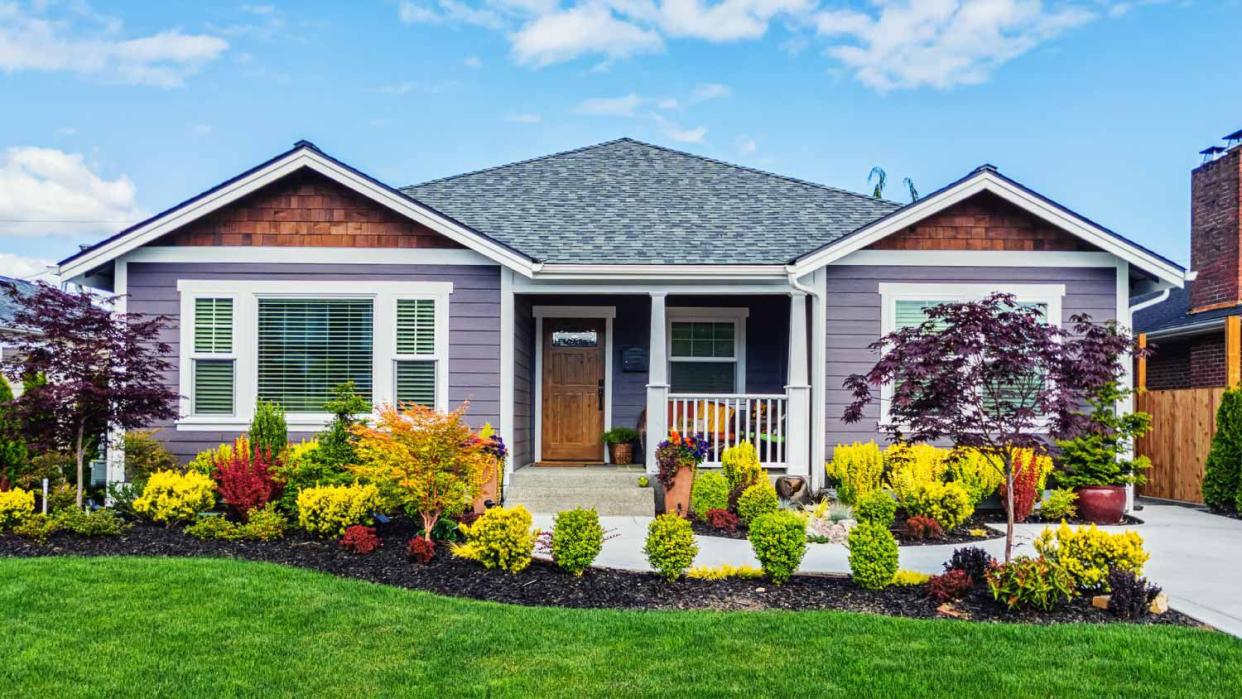
]Landscaping Tips To Keep Water Out of Your Basement and Enhance Your Yard
This article originally appeared on Angi and is syndicated by Cheapism.
Like many homeowners, you likely have concerns about keeping your basement dry. However, not all methods involve expensive waterproofing or making changes to your foundation. Get some fresh air and get ready to get your hands dirty with these ideas for using landscaping to keep water away from your house.
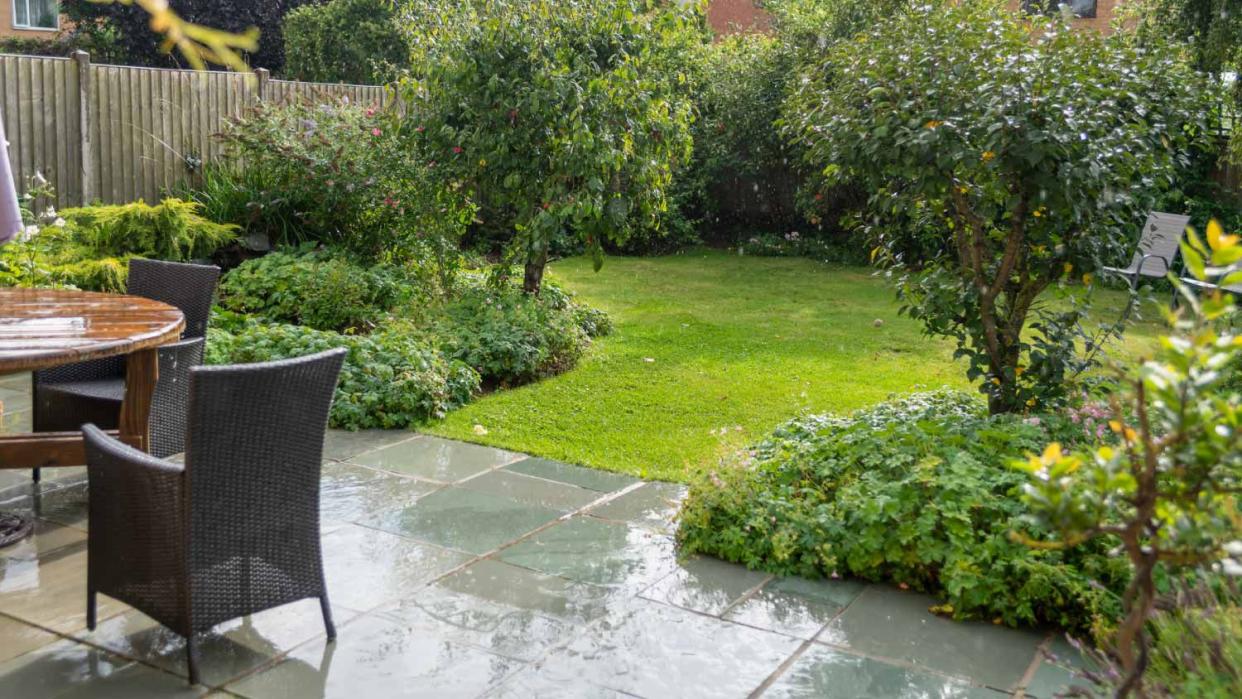
Plant a Rain Garden
Rain gardens are recessed areas of your yard that allow water to run off the lawn or walkways and away from your foundation. You can plant a rain garden in the middle of your yard, but generally, it’s wise to plant one toward the edge, between the yard and the street.
You can create a rain garden with low-maintenance plants to help control erosion and slow the rate at which the water absorbs into the ground. The plants that are considered low maintenance for your specific yard can vary, so this is when speaking with a local gardener can be helpful.
Rain gardens also are typically filled with native plants, which brings us to No. 2.
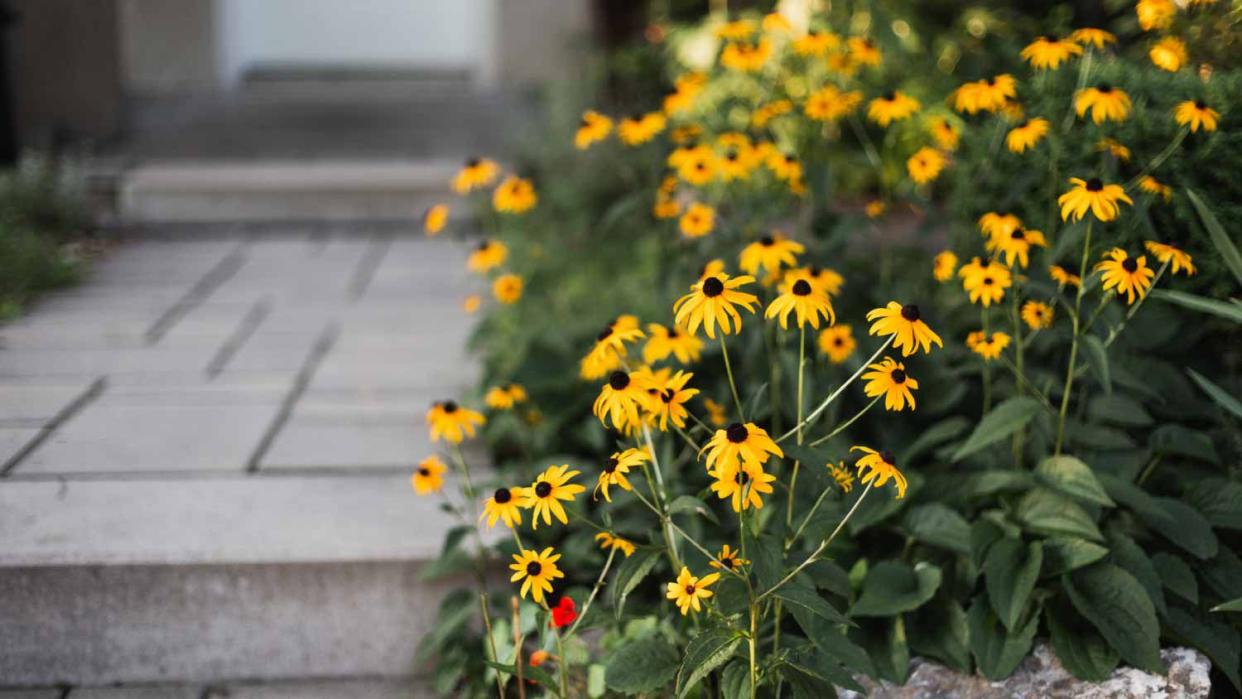
Allow Native Plants to Thrive
Just as important as how you landscape is what you plant. Native plants not only end up being hardier and more drought-tolerant in rain gardens, but they also act as a natural barrier to oily residue and street runoff.
The plants help filter contaminated water before it leeches into the groundwater below. Plus, native plants frequently attract beneficial pollinators to your garden, making your garden healthier and more beautiful. Win-win!
Again, speak with a local pro to find out which plants are native to your area.
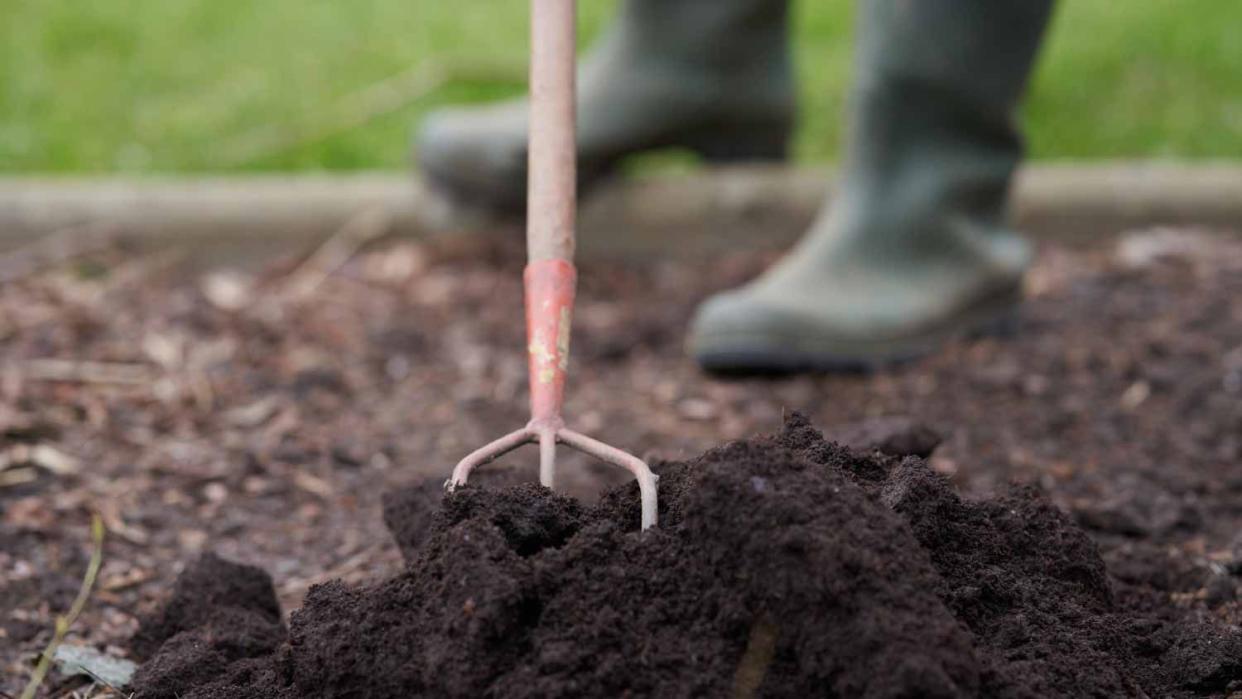
Get a Good Grade
When it comes to landscaping to prevent basement flooding, one of the most fundamental rules is to grade away from the house. While most homes, in theory, should be built slightly above the landscaping or lawn, we all know years of haphazard DIY-ing or home additions can flatten out the grade. There are two key ways homeowners can landscape to keep that important slope.
Make sure your lawn is graded in the right direction: Before planting seed or rolling out sod, the soil must be adequately graded away from your home. This gradual slope, combined with grass’s natural ability to absorb water, makes an excellent and relatively low-maintenance way to prevent basement flooding. Admittedly, getting that grade just right can be tricky. If you are unsure of your skills or lack the equipment, it’s probably a good idea to seek a professional landscape grading service near you.
Create a gap between the siding and mulch: If you are planting or reviving a garden right next to the house, be sure to create a barrier between the siding and the area where you will plant. Dig a trench that is 6 to 8 inches wide and about 6 inches deep. Fill the trench with rocks to prevent water from pooling. The area of the bed where you plant should be a few inches lower than this barrier trench to help maintain water runoff away from the house.
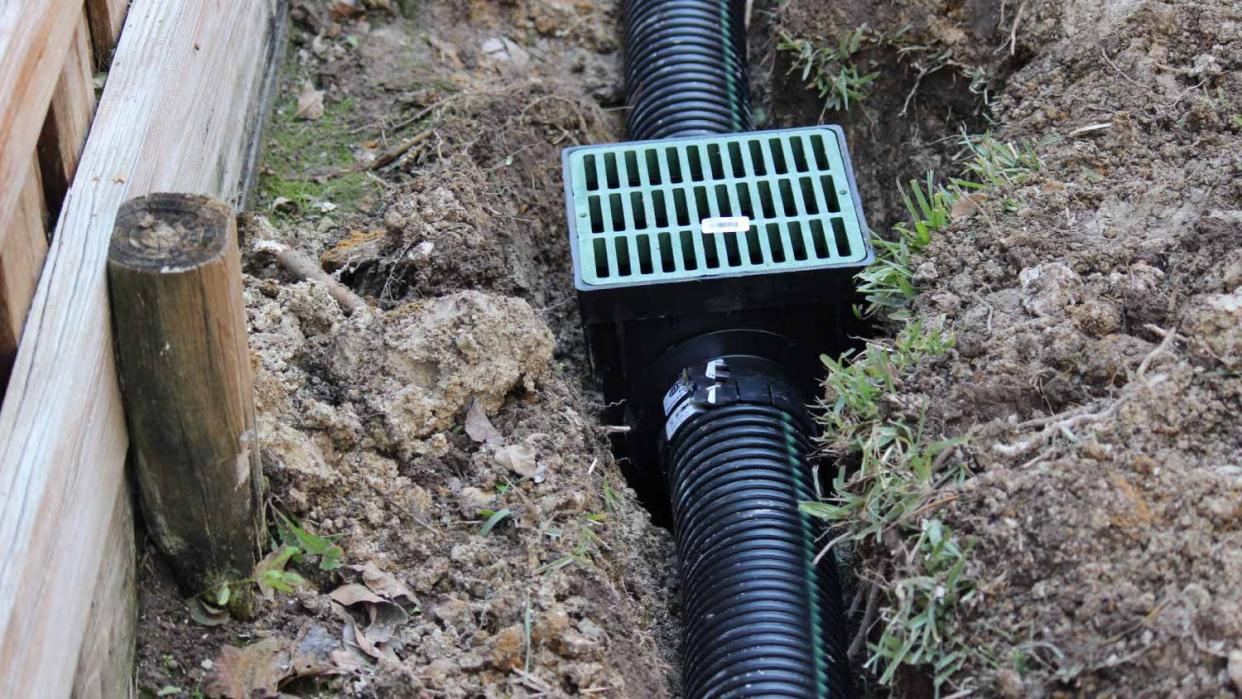
Consider Trenches and French Drains
In addition to a barrier along a garden bed, many homes benefit from hardscaped trenches and French drains. A simpler method is to create a dry creek bed in the middle of your yard and fill it with river rock, all sloping away from the house.
Many newer homes have French drains or perimeter drains already installed as part of the landscaping. These trenches run along the edge of the home and under the yard and are lined with tile and rock. They direct the water flow away from your house, usually with PVC pipe and help lower the water table overall.
Because it involves digging up more than a small area in your yard, installing a drainage system can be complex. If done incorrectly, you could end up increasing standing water near your house, so it’s well worth the money to hire a local French drain installer.
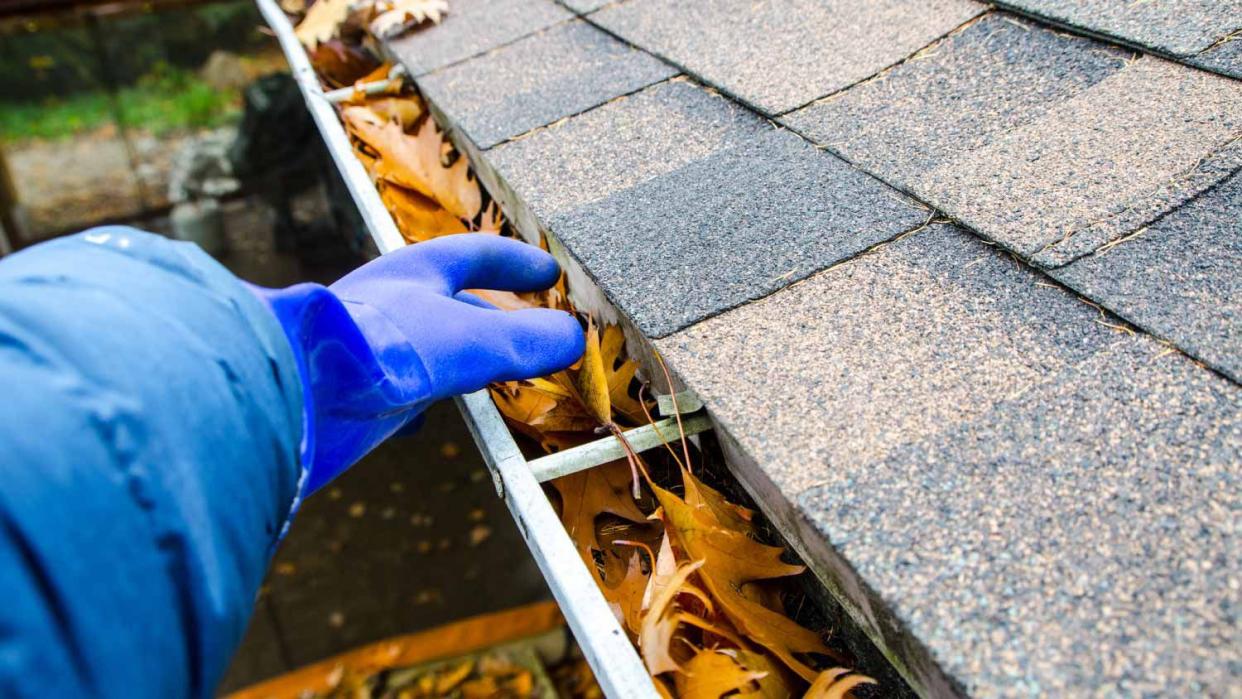
Keep Your Gutters Clean
If you don’t already, this year is the one to start regularly inspecting and cleaning your gutters. If gutters back up with leaves and other debris, they will often spill over, causing water to pool directly along the foundation. If getting to your gutters yourself is a problem (or it just sounds like a terrible way to spend a Saturday), it may be worth paying someone to get the job done.
Typically, gutter cleaning costs around $200 for an average-sized house.
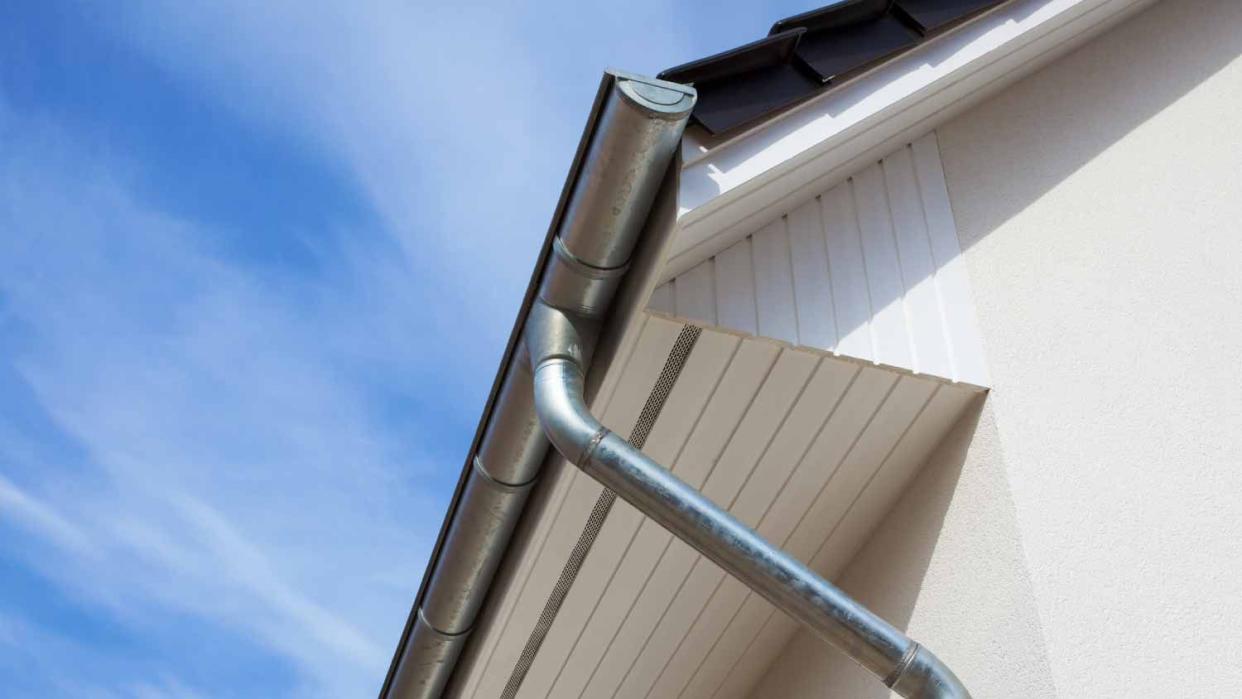
Check Downspouts
It’s not unusual for a home’s downspouts to get pushed out of place. If not properly directed, water will pool too close to the foundation. Check downspouts regularly and reposition as needed.
It’s also a good idea to have a drainage area where the downspouts flow, filled with gravel or river rock, to help slow the water absorption into the ground. Rain chains have become increasingly popular as attractive substitutes for downspouts. These chains direct the flow of water into rain barrels or even small ponds.
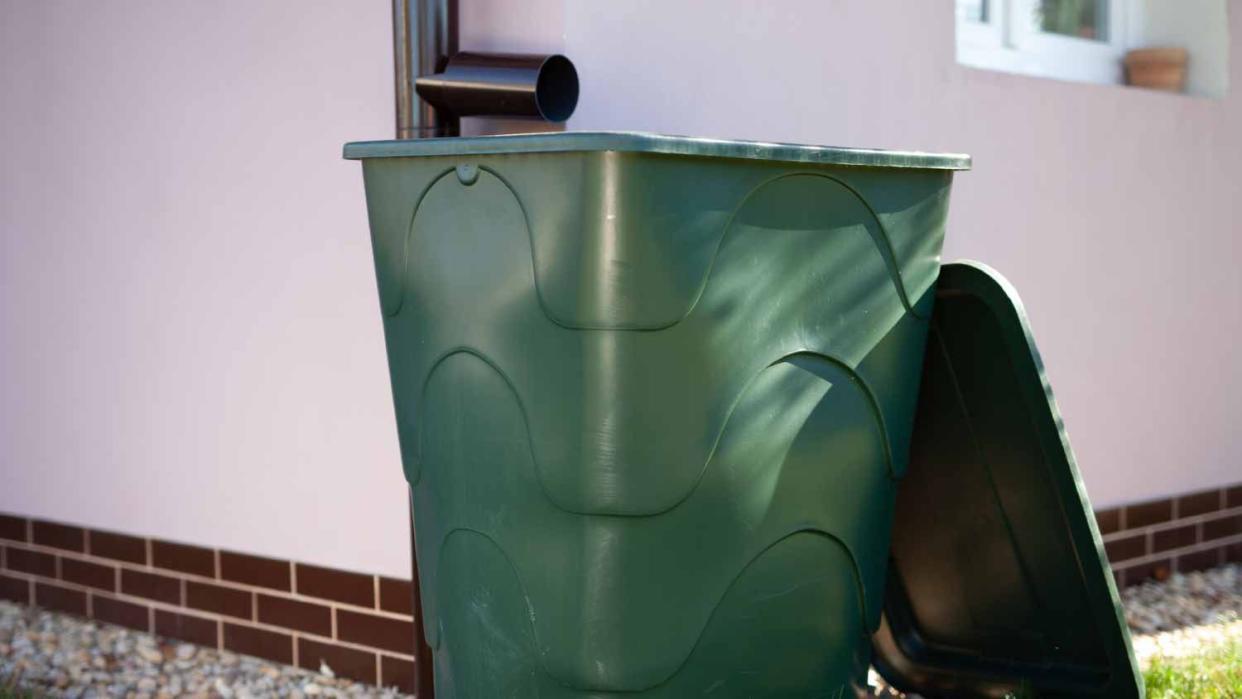
Install Rain Barrels
Downspouts (or rain chains) can also channel H2O into rain barrels. Not only do the barrels help prevent water from seeping into the foundation, but they also have the added bonus of allowing you to water parts of your garden or lawn on drier days without turning on the hose. In climates that get heavy rain, the barrels need to be emptied more often. Most rain barrels have a spigot, so you can simply hook up a hose to divert the water away from your house.
With a bit of planning and some sweat equity, you’ll have a landscaped yard that is not only beautiful but also key to preventing excess water from getting into your house.
